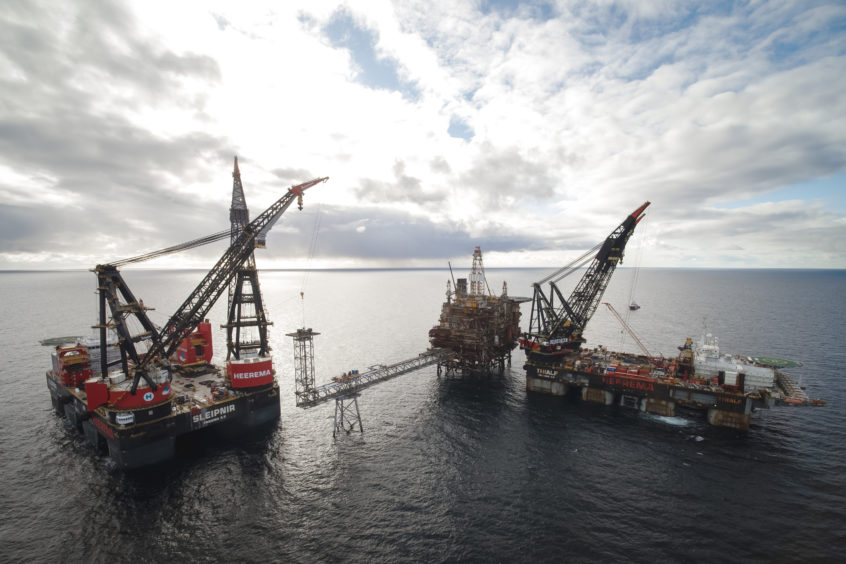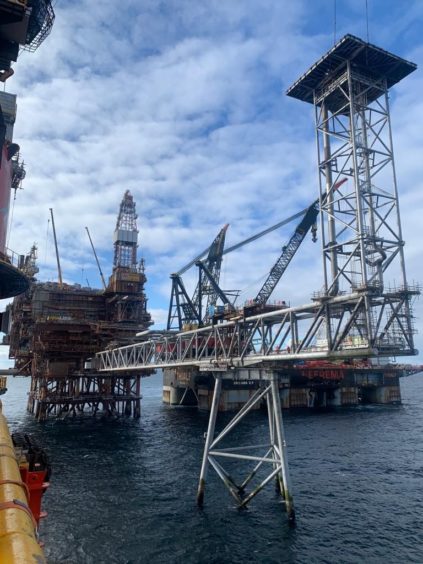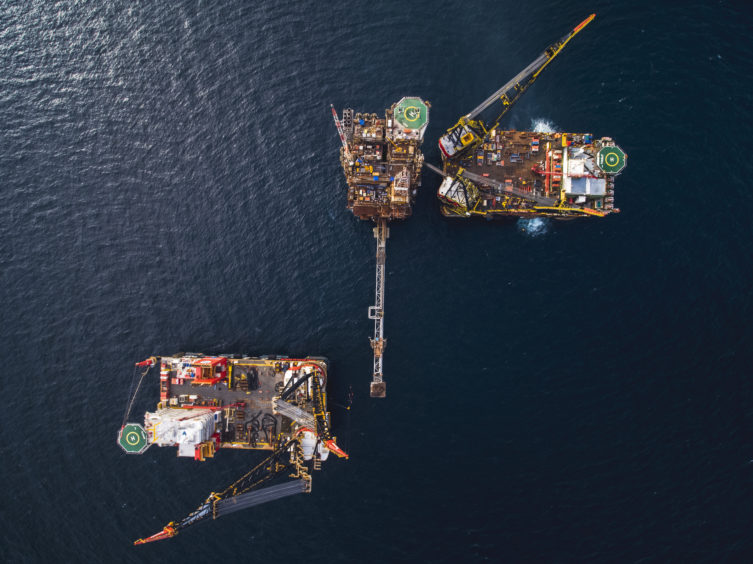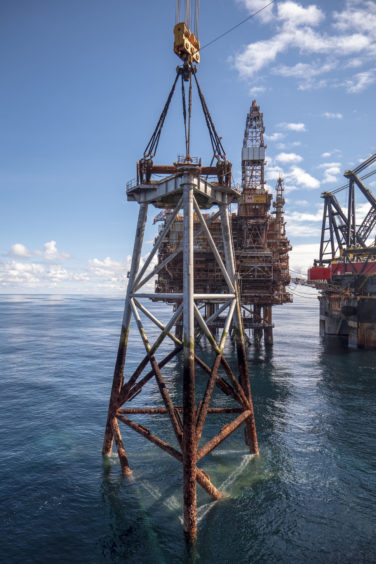
Taqa has kicked off removal work for the Brae Bravo, one of the largest decommissioning projects in the North Sea.
Around 500 people will be working offshore at the peak of the project to remove and dismantle the platform 119 miles east of Shetland.
The scheme has already seen two of the world’s largest semi-submersible crane vessels both being used, the first time that they have ever met in the North Sea.
Brae Bravo is being removed over three phases in 2021 and 2022 using Heerema’s Thialf and Sleipnir vessels, both greater than 200metres long.
The platform consists of a topside weighing 36,000 tonnes and a jacket substructure weighing 22,500 tonnes.
The first campaign, which began last month, saw both vessels on the field for several days to prepare and ultimately remove the flare tower and bridge.
Thialf remains on the field to complete preparation and module separation, which will allow final removal in the summer.
The second campaign, also this summer, will see Sleipnir remove the remaining topsides during two trips to the field, at which point the only remaining visible element of the Brae Bravo will be the top of the jacket above the surface.
A navigational aid will be put in place and the jacket will be decommissioned in 2022.
Donald Taylor, Taqa Managing Director for Europe, said: “Taqa Europe is embarking on one of the largest decommissioning exercises in the North Sea to date.
“The Brae Bravo has been an integral part of the Brae fields for more than three decades with the size and scale of the platform, including the topside structure, almost the height of the London Eye.
“The arrival of Thialf in the field was a historic occasion, heralding the moment when we started converting many years of planning into practical implementation.”
Mr Taylor added that the asset has been an “important contributor” to the industry over the last 33 years and that it is important to “recognise the efforts of the project team” delivering the work despite the challenges of Covid-19.
Missed opportunity?
Taqa said the waste material will be transported to AF Offshore Decom’s yard in Vats, Norway, with the aim of 95% being recycled or reused.
John Boland, regional organiser of the Unite union said it was “yet another loss opportunity for dismantling yards in the UK”.
He added: “The Brae Bravo is 119 miles east of Shetland, you would think the obvious choice would be to take it to Dales Voe decommissioning site at Shetland, or some of the other UK decommissioning yards.
“Governments need to intervene, and start protecting jobs in this country.”
Taqa said AF provided the best package at time of tender versus other options avaialable “to deliver in the timeframe and scope” the operator planned.
Lars Myhre Hjelmeset, managing director of AF Offshore Decom, said: “This type of operation requires careful planning and we’re proud that we have managed to mobilise personnel in a safe and secure manner in the midst of a pandemic. We’re looking forward to continuing the partnership and ensuring a good process for recycling the platform.”
Heerema CEO, Koos-Jan van Brouwershaven, added: “Despite the challenges of the pandemic, we have mobilised as many as 500 people to our vessels safely. This accomplishment was only possible due to the close collaboration with our client Taqa and consortium partner AF Offshore Decom. We are proud to execute this historic project.”
Brae Bravo was installed in 1987, with first oil was achieved on 13th April 1988 reaching a peak production of 94,567 barrels of oil equivalent per day.
The platform ceased production in December 2017.



